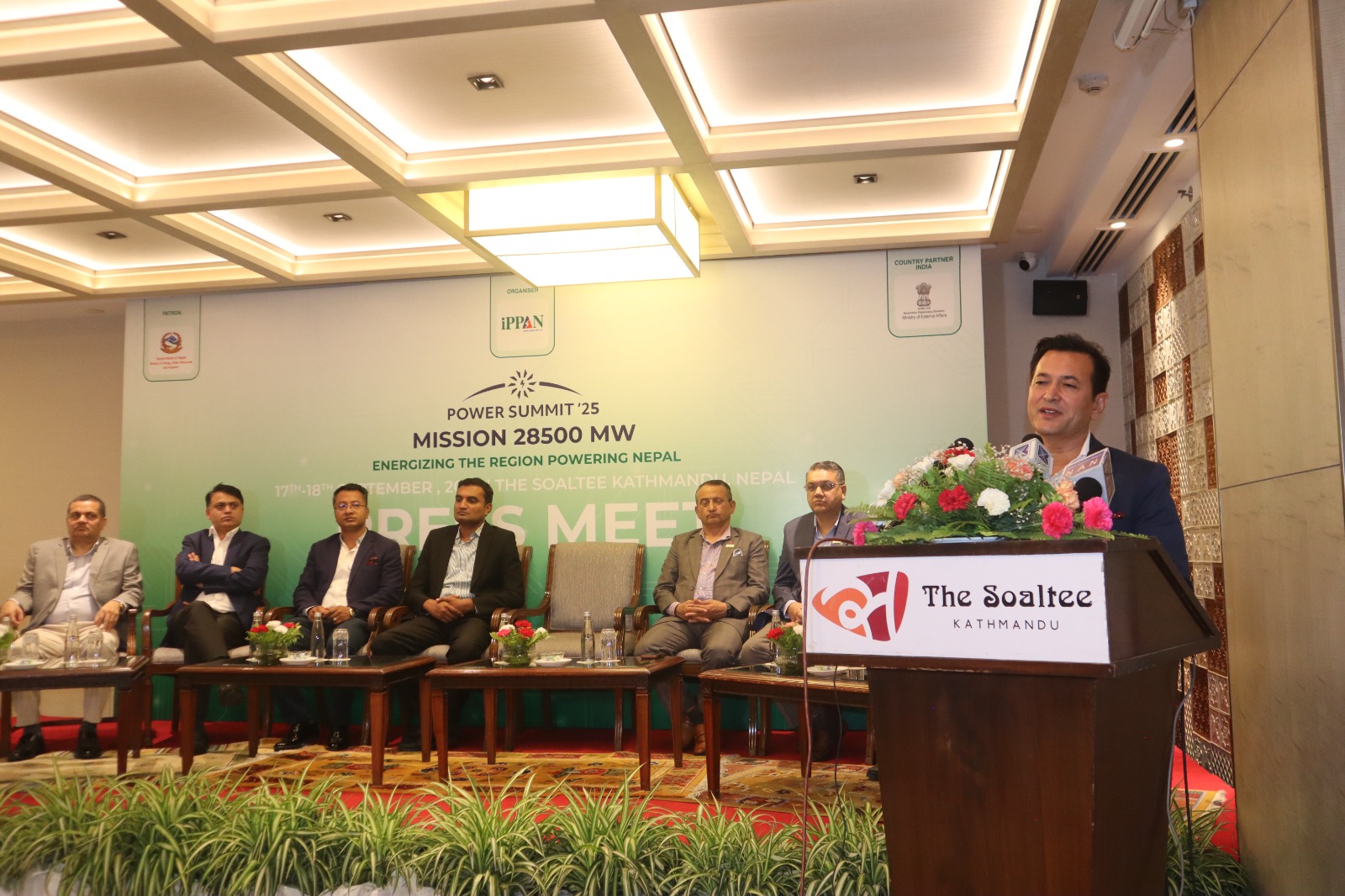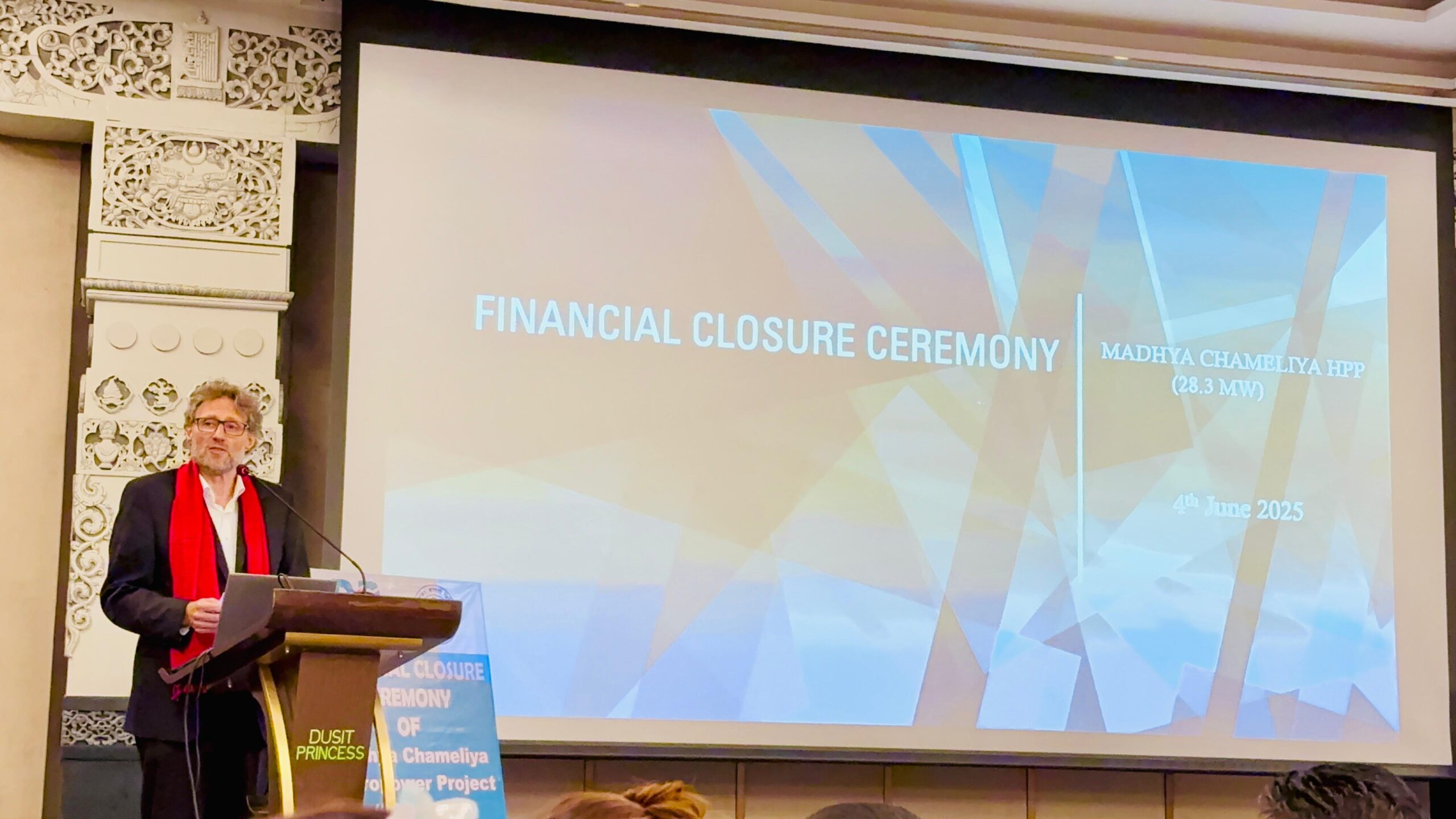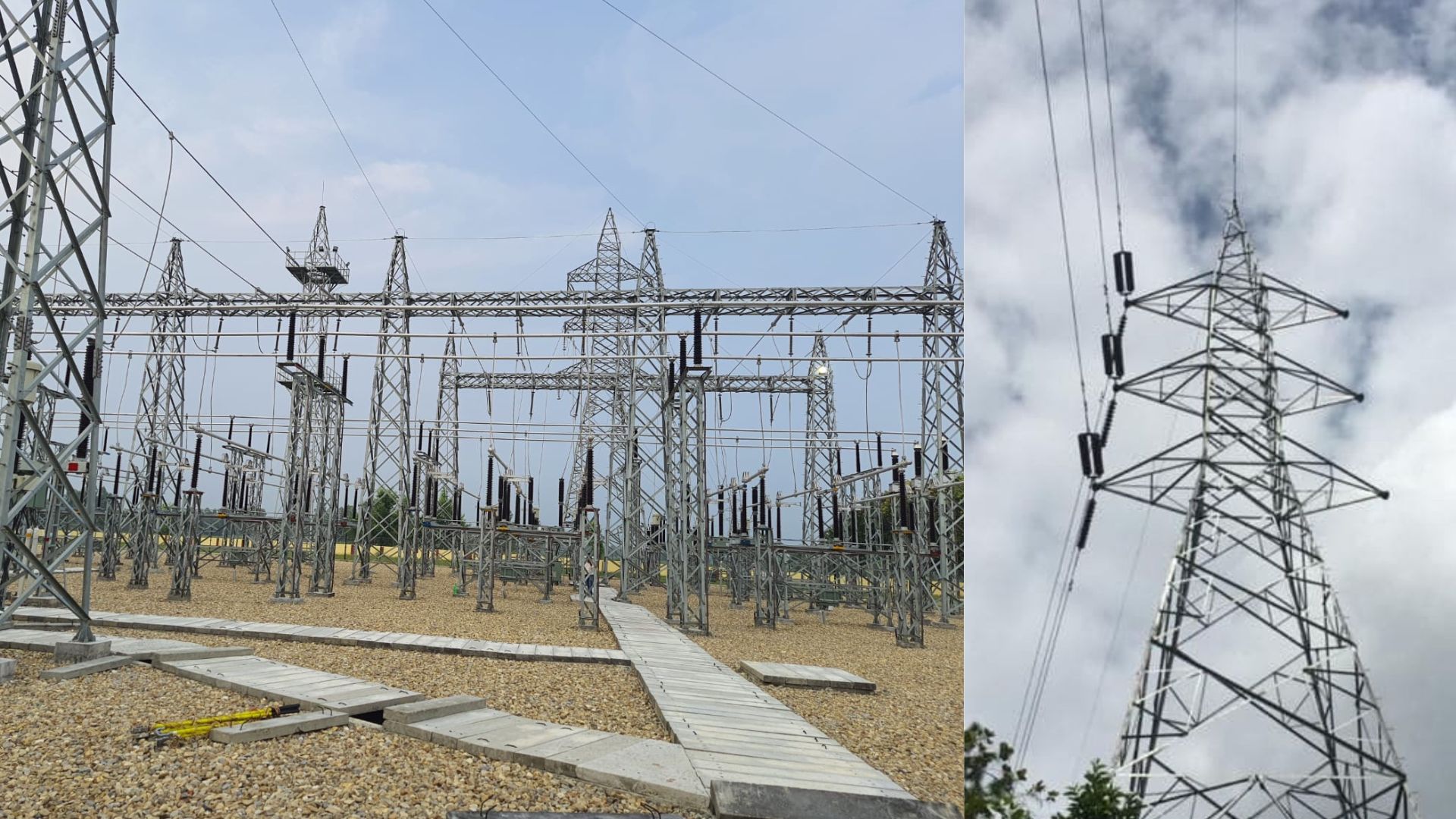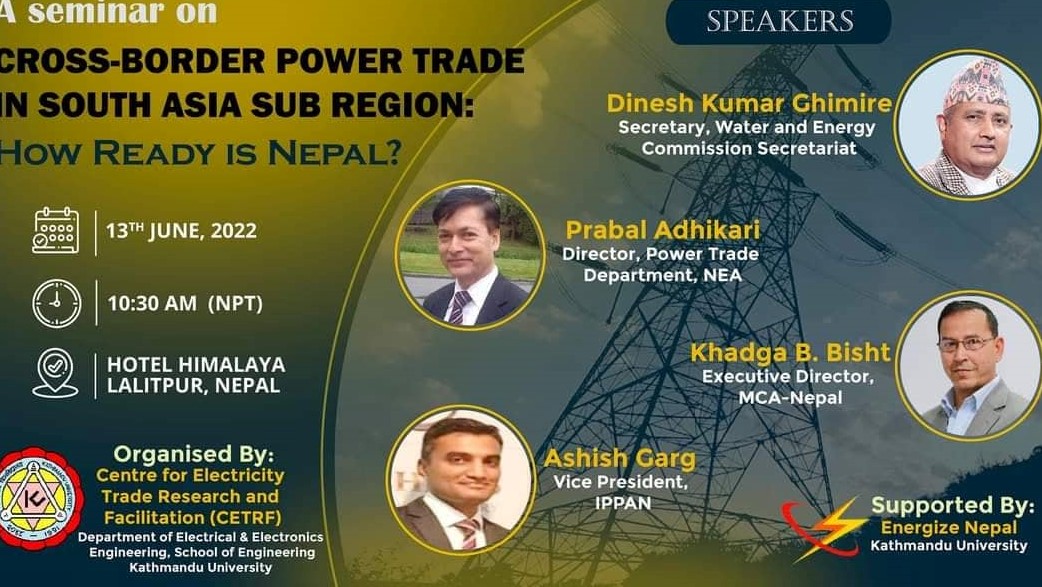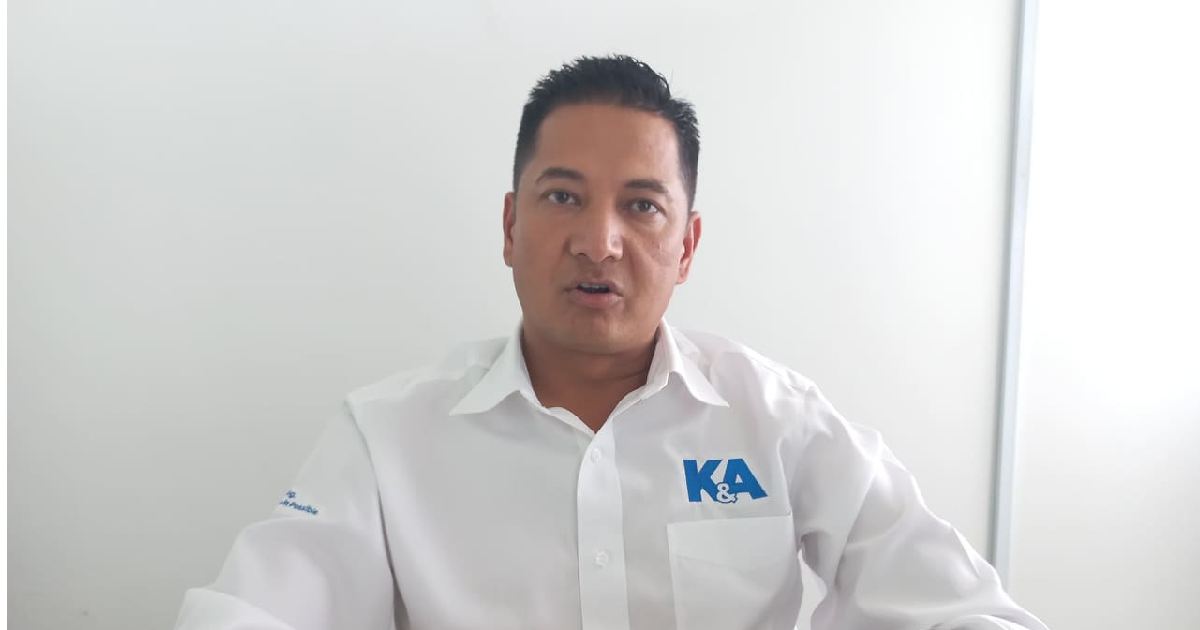
 KATHMANDU: In 1960, Santa Bahadur Pun, then an intermediate, had no idea about what subject to choose for the next academic level. Some hydropower experts suggested that he pursue hydro-engineering. The only reason for encouraging him to choose hydro-engineering was the huge prospect of getting a job in the Karnali-Chisapani hydropower project, which was freshly announced by the government. Young and energetic Pun also got excited to make a career in hydro-engineering and left for an abroad study. More than six decades passed ever since. None knows how much water has flowed down the Karnali River over the period, but everyone knows that the 10,800 MW project is still in the same condition. Pun returned to Nepal after the study, became Executive Director of Nepal Electricity Authority (NEA), and now living retired life but he is still listening to the same talks about the project.
KATHMANDU: In 1960, Santa Bahadur Pun, then an intermediate, had no idea about what subject to choose for the next academic level. Some hydropower experts suggested that he pursue hydro-engineering. The only reason for encouraging him to choose hydro-engineering was the huge prospect of getting a job in the Karnali-Chisapani hydropower project, which was freshly announced by the government. Young and energetic Pun also got excited to make a career in hydro-engineering and left for an abroad study. More than six decades passed ever since. None knows how much water has flowed down the Karnali River over the period, but everyone knows that the 10,800 MW project is still in the same condition. Pun returned to Nepal after the study, became Executive Director of Nepal Electricity Authority (NEA), and now living retired life but he is still listening to the same talks about the project.
It is not that the government has not tried to advance this project. Many Nepali youths were sent to study engineering at Roorkee University in India from 1980 to 1984 under a government scholarship program, targetting the same project. With the help of the United Nations Development Program (UNDP), the government spent one million rupees per person for the four-year course.
Late Niaz Ahmed is one of those lucky fresh engineers then. Ahmed returned to Nepal after completing his study with first honors at Roorkee University, got a job at the NEA, and got retirement one and a half years back. “ ‘It may seem like a story to many, but I went to study to build the Karnali-Chisapani project. Several years passed since I returned to Nepal after completing my study. Now I am retiree, but the project is still nowhere,” is what Ahmed used to tell his colleagues. If we look at the government budgets for the last 12 years, even a single year may have passed without mentioning this project in policies and programs.
However, the language mentioned in the budget is only ritualistic and rhetoric without a clear program to implement the project. Phrases like ‘preliminary work will be started’, ‘further studies to be carried out,’, ‘priority will be given, an ‘investment framework will be developed, and ‘necessary budget has been allocated’ are commonly found about the project in the budgets.
Not only Karnali Chisapani, the 750 MW West Seti Reservoir Project has been in the news for 40 years. In 1990, a Memorandum of Understanding was signed between the then Ministry of Water Resources and the Australian company Snowy Mountain Engineering Corporation (SMEC). However, the government has taken a fresh initiative to move forward with the project which is now planned for generating 1200 MW ( 750 MW West Seti and 450 MW Seti River 6 ).

“We are confident that this project will go ahead after the MoU a good Indian company”
An MoU has recently been signed between the Investment Board Nepal (IBN) and the Indian company National Hydro Electric Power Corporation (NHPC) Limited to advance the same project. With the latest initiative, there is hope that the project will move forward. Sushil Bhatta, chief executive officer of the investment board, says – “We are confident that this project will go ahead after the MoU with a good Indian company.”
Similarly, the Budhigandaki Reservoir Hydropower Project of 1200 MW has been in the news for 50 years. It has been almost 40 years since the pre-feasibility study of this project was completed. When the French company Tractwell Engineering contracted to prepare a Detailed Project Report (DPR) 11 years ago, it was said that they would start the construction of the Budhigandaki project by completing the Financial Closure as well. However, it could not happen. It has not yet been decided when on which modality and how to arrange the finances for the project. Recently, the Ministry of Energy, Water Resources, and Irrigation have decided to proceed with the project on a company model.
Now, before deciding to build a project with domestic investment, the story of the debate about whether to proceed with domestic or foreign investment is exciting.
10 years ago, the project was given to the Chinese company China Gejuwa Group of Company (CGGC) to be built on Engineering, Procurement, Contract with Finance (EPCF) model in May 2017. However, as soon as the government changed, it was decided to cancel the agreement and build it under the leadership of NEA with domestic investment.

“The process of company registration has reached the final stage to build the Bodhigandaki Reservoir Project with indigenous investment in the company model”
In the meantime, after the change of government again, the process was started in October 2018 about giving CGGC to build Budhigandaki on the EPCF model.
The story of the Pancheshwar multi-purpose project is also the same. The 6,480 MW project identified 66 years ago was signed between the governments of Nepal and India for the construction of Sharda Barrage, Tanakpur Barrage, and Pancheswar on the Mahakali River. The DPR for the project was said to be finalized within 6 months. Even after 27 years, the DPR has not yet been finalized. Pancheswar Development Authority was formed 13 years ago to carry out the project.
Similarly, it is not yet decided when the construction of Nijgadh International Airport, which has been in the news for 30 years, will start. After studying the feasibility of Biratnagar, Bharatpur, Nijgadh, Nepalganj, Dhangadhi, Surkhet, Bhairahawa, and other places, Nijgadh was considered to be the best option for Tribhuvan Airport, but the project could not proceed due to the controversy over clearing trees and its impact on the environment. It should be made to bring more tourists to Nepal, but due to unnecessary disputes, problems have arisen to move this project forward.
A pre-feasibility study was carried out in 1994. In February 2007, the Council of Ministers decided to build the project on a ‘Built, Operate, Own, Transfer (BOOT) model’. The Ministry of Culture, Tourism, and Civil Aviation entrusted the Korean company Landmark Worldwide (LMW) to carry out this project on February 23, 2016. Although the LMW submitted the report on 17th July 2025, the work of this project has not progressed. However, the program related to the construction of this project is not included in the budget every year.
Similarly, the railway from Raxaul in India to Amlekhganj in Nepal was built and started operating 95 years ago. Currently, the upgraded Jayanagar-Janakpur railway line was operational 85 years ago. While the first rail line is closed, the second one is still running. Since then, the Raxaul-Kathmandu rail has started to be discussed. However, so far, the necessary infrastructure for railway operation has not been built. Along with Raxaul-Kathmandu, East-West train, Kerung-Kathmandu, Biratnagar-Jogbani, Bhairahawa-Nautnawa, Kakdavitta-Jalpaigudi, Nepalgunj-Rupadiya, and other trains have been discussed for 2 decades. However, construction has not started yet. Although the government has announced, the process of building the structure has not started. It has been 11 years since the government established the Railway Department, a designated body for the development of rail transport. No encouraging progress has been made in the development of railways.
There is a similar story of Koshi High Dam. Discussions and debates have been going on in this project which is expected to benefit both Nepal and India, especially in areas such as flood control, hydropower development, and water transportation. In 1991, it was decided to proceed with the project after a discussion at the Prime Minister level. Before proceeding with this project, the pros and cons of it should be thoroughly analyzed, but because the process was carried forward without prior preparation, the work of the project has not been accelerated.
Even the big projects made in Nepal have been killed by the government itself without making proper efforts for operation. An example of this is Dhulikhel IT Park. The government has easily closed the IT park which was built two decades ago at the cost of half a billion rupees and established a security press there. The construction of the Information Technology Park in Bangalore, India, and Nepal’s IT Park started almost simultaneously. Now Security Press has been established in the space allocated for the proposed IT Park, while Bangalore became one of the world’s most vibrant IT cities.
As the biggest park in South Asia, the government started the construction in 2000 in Kavre and handed it over in 2000. After constructing the buildings in the first phase and putting them into operation, there was also a plan to build other infrastructures in the second phase. However, the IT park could not be operated in the attractive building completed in the first phase, nor did the work of the second phase begin. The high-level Information Technology Commission, which was formed to work in the field of information technology, including its operation, was also abolished. Now again the demand for IT parks and high-level commissions is rising in the country.

“Rather than not running the IT park, the government has not run it. For this, the government did not make any policy arrangements, nor did it make a business plan”
Information technology expert Manohar Bhattarai, who is also the former vice-chairman of the high-level commission, says that it is wrong for the government to transform the IT park into a security press without making appropriate policy arrangements.
It is not right to build a security park instead of an IT park. Rather than not running the IT park, the government has not run it. For this, the government did not make any policy arrangements, nor did it make a business plan,’ says Bhattarai – “We focused more on the paper plan, there was no study of the rationale for establishing the IT park, there was a policy vacuum after it was built, tax breaks and other arrangements could have been made for those who came here, but they were not.”
He alleges that the government did not listen to the special economic zone like special laws and facilities for the IT park as well as the proposal to lease it to the investors for at least 25 years and the existence of the IT park was terminated with wrong intentions though it has great potential.
Hurried implementation, poor preparation
Experts argue that the lack of effective preparation and the tendency to make announcements in a hurry are major reasons behind the poor delivery of the projects.

“We got a scholarship for this project and came back after studying. It is a shame and a tragedy that the same project is not going to be built after decades”
Om Bahadur Raut, who received an engineering study scholarship at Roorkee University for Karnali Chisapani, argues that due to the lack of political commitment and instability, and lack of accuracy in the decision-making process, big projects cannot proceed. “We got a scholarship for this project and came back after studying. It is a shame and a tragedy that even after decades, the same project is not going to be built,” says Raut. A joint team of India and Nepal was also formed to advance this project. At that time, the team including Raut conducted a Detailed Feasibility Study which concluded that the project was feasible.
“But why the project could not take off? It has not been understood yet,” he adds.

“Making a big project requires a big and broad political will, which is not seen in politicians”
Radhesh Pant, an infrastructure investment expert, sees the short-sightedness of the political parties and lack of commitment toward development as the main reason why large infrastructure projects are stalled for a long time. A big and broad political will is needed to make big projects. “That is not seen in politicians,” says Pant, who is also the former Chief Executive Officer of IBN. “Our politicians are adept at discussing big projects for votes, but I have not seen much commitment from them in implementation.
Khadga Bahadur Bista, former president of the Independent Energy Producers Association of Nepal (IPPAN), observes the tendency to do unnecessary politics in the name of big projects as a strong factor behind the pathetic performance.

“As soon as a big infrastructure project is started, the voice of opposition becomes louder, due to which the politicians do not have the will to carry out the project”
“As big projects are moved ahead, the voice of opposition becomes louder. When the opposition grows, the politicians do not have the willpower to manage the situation that disrupts the implementation of these projects. Politicians move in line with the political interest,” he says.
Gopi Mainali, the former secretary of the Government of Nepal, says that due to the lack of real commitment and the tendency to consider preliminary preparations as the beginning, many big projects have been limited to paper. “We lack real commitment to move forward with big projects, we start building dreams considering preparation as the beginning, we don’t analyze its financial management and returns,” says Mainali. Mainali is of the opinion that the superficial publicity about the project creates unnecessary expectations among the people and creates dissatisfaction due to non-implementation.

“We lack real commitment to carry out big projects, we start building dreams by considering preliminary preparations as the beginning, and we do not analyze its financial management and returns”
A wrong trend of announcing projects without good preparation and project feasibility is also seen in Nepal. Devendra Karki, the former secretary of the Ministry of Physical Infrastructure and Transport, insists that the construction of the projects should be announced only after technical, economic, and social studies.
He suggested that the benefits and costs be analyzed before taking the project to construction. The tendency of proclaiming, fantasizing, and propagating does not advance the projects.

“Proclaiming, fanciful dreams and propaganda will not advance the project. They are limited to discussion only
Kamal Raj Pandey, the former joint secretary of the Ministry of Physical Infrastructure, has a similar experience. He says that many projects are falling victim to the tendency to announce without prior preparation. “Mare publicity can only share a dream and raise expectation, but development is almost impossible without effective preparation,”-Kamal Raj Pandey, Infrastructure expert, and former joint secretary
In order to show that the process of building big projects has been advanced during his tenure, there is also a tendency to show that he has worked outwardly for temporary benefits through this. A few years ago, the railway contract case which was done without prior preparation can be taken as an example.

“Mare publicity can only share a dream and raise expectation, but development is almost impossible without effective preparation”
Economist Dr. Dadhi Adhikari believes that the lack of good governance and accountability is the main reason why big projects cannot go ahead rather than financial management.
“There is a lack of good governance, responsibility, and accountability in all small and big projects. Rather than announcing and building the project, there is a tendency to discuss the project for other specific interests,” he says.

“There is a lack of good governance, responsibility, and accountability in all small and big projects, there is a tendency to announce and discuss them for certain interests rather than making them”
Mega project expert Patrick Weaver 12 years ago in his famous research paper ‘Mega Project Mega Problem” concluded that big projects also lead to big protests if they are not properly managed in time. If the trend of announcing big projects in a hurry without preparation and failing to implement them for years is not stopped, it generates only frustration, not excitement.


